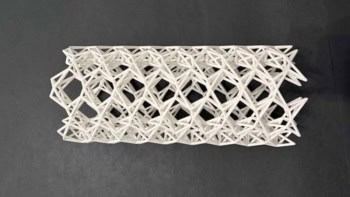Magnetic materials are vital for today's information technology industry. Thin magnetic films, for example, are used in computer hard disks, while magnetic multilayer structures are used as tiny sensors. But if industrialists are to make faster processors and devices that can store more data, they need to understand the properties of magnetic materials at scales of less than 100 nanometres. Now researchers from Germany have developed a technique that can image antiferromagnetic monolayers with a resolution of less than 10 nanometres. Previous analyses of these materials have been limited to resolutions of a micron (S Heinze et al. Science 288 1805).
S Heinze and co-workers from the University of Hamburg and X Nie and colleagues from the Forschungszentrum Jülich have used “spin-polarized scanning tunelling microscopy” to image an antiferromagnetic layer of manganese atoms on a tungsten substrate. In antiferromagnetic materials, the direction of the magnetic moment alternates from one lattice site to the next, but there is no overall magnetization. This has made it difficult to study the magnetic structure of antiferromagnets with existing optical and X-ray techniques.
The German researchers coated the tip of a scanning probe microscope with a ferromagnetic material that emitted spin-polarized electrons. The current that tunnels from the tip to the sample depends on the relative orientation of the magnetization of the tip and the sample. It can therefore provide information about the properties of the layer of manganese atoms. By supplying information at such high resolution, the technique could be used to study in detail the magnetic structure inside antiferromagnetic domain wells, at steps and near impurities or defects. It could also be used to study the antiferromagnetic structure of magnetic surfaces and surface alloys.



